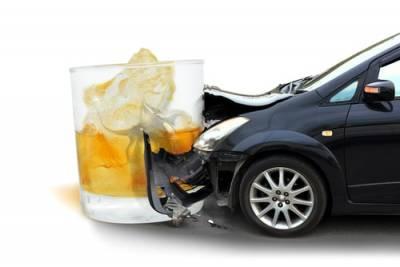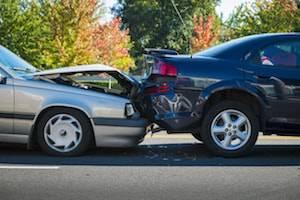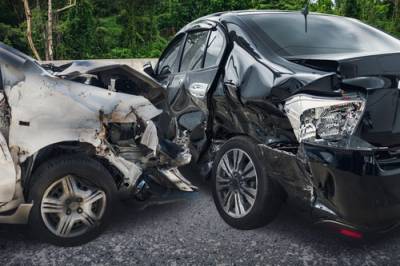
 When a person gets behind the wheel of a vehicle, they are making a statement that they are in good health and capable of safely operating a vehicle. Unfortunately, many people fail to recognize the tangible impact that lack of sleep can have on a person’s ability to safely drive. The reality of the situation is that drowsy driving is a massive traffic safety issue, throughout the United States. If you or a loved one have been injured in a motor vehicle collision, it is time to speak with an attorney regarding your options.
When a person gets behind the wheel of a vehicle, they are making a statement that they are in good health and capable of safely operating a vehicle. Unfortunately, many people fail to recognize the tangible impact that lack of sleep can have on a person’s ability to safely drive. The reality of the situation is that drowsy driving is a massive traffic safety issue, throughout the United States. If you or a loved one have been injured in a motor vehicle collision, it is time to speak with an attorney regarding your options.
While we all can understand the inherent dangers of falling asleep at the wheel, driving while still conscious but sleep deprived is also incredibly dangerous. According to studies conducted by the National Safety Council, driving while drowsy impacts a person’s reaction time, attention span, and general awareness. The study also found that driving after twenty consecutive hours without sleep is the cognitive equivalent of driving with 0.08 blood alcohol content.
 When a person suffers an injury in the workplace, it is the employer’s responsibility to pay for medical expenses and compensate the injured party for lost work time. After suffering an injury in the workplace, a person will be financially reliant on the workers’ compensation benefits, failure to secure those payments can result in serious financial instability. If you have been injured while at work, it is time to speak with a knowledgeable legal professional.
When a person suffers an injury in the workplace, it is the employer’s responsibility to pay for medical expenses and compensate the injured party for lost work time. After suffering an injury in the workplace, a person will be financially reliant on the workers’ compensation benefits, failure to secure those payments can result in serious financial instability. If you have been injured while at work, it is time to speak with a knowledgeable legal professional.
In the state of Illinois, a worker can pursue two types of temporary disability payments, based on the extent of their injuries. If a person has suffered injuries that are significant enough to keep them out of work entirely for a certain amount of time, the employer is obligated to make Temporary Total Disability (TTD) payments. The employer will be asked to pay two-thirds of the employee’s average weekly wages. If the employee is able to work a job that requires less physical stress to the injured area, the employer will be asked to make Temporary Partial Disability (TPD) payments. The amount of the payments will be calculated through subtracting the wage of the new temporary job from the wage of the employee’s old job, and compensating the employee with two-thirds of the difference between the two salaries. It should be noted that in both payment programs, the employer will be forced to pay for all medical expenses.
 According to statistics compiled by the U.S. Department of Transportation, approximately 33,654 fatal car crashes occurred throughout the United States in 2018. While any and all car accidents can come with inherent dangers, some collisions are simply more dangerous than others. Head-on collisions are the most dangerous form of motor vehicle collision, due in large part to the proximity of the collision on the vehicle and the merging speeds of both vehicles. While head-on collisions only account for 2% of all annual motor vehicle collisions, they make up more than 10% of all traffic fatalities. Below we will explore some of the most common injuries that occur in head-on collisions, as well as some of the most common causes of these dangerous motor vehicle collisions.
According to statistics compiled by the U.S. Department of Transportation, approximately 33,654 fatal car crashes occurred throughout the United States in 2018. While any and all car accidents can come with inherent dangers, some collisions are simply more dangerous than others. Head-on collisions are the most dangerous form of motor vehicle collision, due in large part to the proximity of the collision on the vehicle and the merging speeds of both vehicles. While head-on collisions only account for 2% of all annual motor vehicle collisions, they make up more than 10% of all traffic fatalities. Below we will explore some of the most common injuries that occur in head-on collisions, as well as some of the most common causes of these dangerous motor vehicle collisions.
As mentioned above, head-on collisions are notoriously dangerous. This is in large part due to the fact that both drivers and front-seat passengers collide instantly with the other vehicle. Unsurprisingly the injuries suffered in head-on collisions can be incredibly severe. The most common forms of injury range from brain trauma, spinal injuries, broken or fractured ribs, and various injuries to the limbs. If you or a loved one are injured in a head-on collision, it is critically important to document the full extent of all injuries suffered.
 Throughout the United States, an average of 16 pedestrians are killed after being struck by a car, each and every day. According to statistics compiled by the National Highway Traffic Safety Administration (NHTSA), just under 6,000 pedestrians were fatally injured in car crashes, throughout 2017 alone. Due to the sheer size difference between a standard automobile and a pedestrian, pedestrians often suffer severe if not fatal injuries in these accidents. Perhaps it should come as no surprise, that pedestrian fatalities accounted for 16% of all traffic deaths throughout 2017. If you or a loved one have been injured in a car accident, it is time to speak with a qualified legal professional.
Throughout the United States, an average of 16 pedestrians are killed after being struck by a car, each and every day. According to statistics compiled by the National Highway Traffic Safety Administration (NHTSA), just under 6,000 pedestrians were fatally injured in car crashes, throughout 2017 alone. Due to the sheer size difference between a standard automobile and a pedestrian, pedestrians often suffer severe if not fatal injuries in these accidents. Perhaps it should come as no surprise, that pedestrian fatalities accounted for 16% of all traffic deaths throughout 2017. If you or a loved one have been injured in a car accident, it is time to speak with a qualified legal professional.
After you or a family member has been struck by a motor vehicle, it is imperative to act in a timely fashion. First and foremost, ensure that all injured parties are safe and sound. If any person is significantly injured, seek out emergency medical attention immediately. It is also worth noting that brain and spinal injuries often display delayed symptoms, and you should seek medical attention if you are experiencing any head, neck, or spinal discomfort. Once all medical aspects of the collision have been taken care of, it is time to contact the police. Police presence can be an incentive for the driver to remain on scene and answer any questions regarding their insurance or the incidents that lead to the accident honestly. When proving negligence in a personal injury case, a police report can also be critical throughout the legal process.
 Here in the state of Illinois, driving under the influence of drugs or alcohol is seen as one of the top safety concerns in the state. Recognizing this, law enforcement officials arrested approximately 28,386 people for driving while intoxicated, throughout 2018 alone. Tragically, despite diligent work of local law enforcement, just under 300 Illinoisans lost their lives in accidents involving drunk drivers in 2018. Alcohol-related crashes accounted for 28% of all fatal car accidents throughout Illinois, in 2018. If you or a loved one have been injured in a motor vehicle collision, it is time to speak with a knowledgeable legal professional.
Here in the state of Illinois, driving under the influence of drugs or alcohol is seen as one of the top safety concerns in the state. Recognizing this, law enforcement officials arrested approximately 28,386 people for driving while intoxicated, throughout 2018 alone. Tragically, despite diligent work of local law enforcement, just under 300 Illinoisans lost their lives in accidents involving drunk drivers in 2018. Alcohol-related crashes accounted for 28% of all fatal car accidents throughout Illinois, in 2018. If you or a loved one have been injured in a motor vehicle collision, it is time to speak with a knowledgeable legal professional.
If the accident you or a family member were injured in involved an inebriated driver, it is more than likely that the collision will involve a criminal investigation. That being said, a personal injury or wrongful death suit must be filed by an individual. In both instances, the lawsuit will be filed if the plaintiff (the person filing) believes that another party acted recklessly or negligently leading to the injuries of themselves or a loved one. If the injuries suffered proved fatal, a wrongful death lawsuit can be filed by family members of the victim.
 Losing a loved one can be one of the most emotionally difficult times in a person’s life. Unfortunately, the financial future of a family can also be put at risk when a provider loses their life in a workplace accident. According to the Occupational Safety and Health Administration (OSHA), approximately 5,250 American workers died on the job throughout 2018. In other words, an average of 100 workers dies per week, throughout the United States. If your loved one has been fatally injured while working, it is time to seek out legal guidance.
Losing a loved one can be one of the most emotionally difficult times in a person’s life. Unfortunately, the financial future of a family can also be put at risk when a provider loses their life in a workplace accident. According to the Occupational Safety and Health Administration (OSHA), approximately 5,250 American workers died on the job throughout 2018. In other words, an average of 100 workers dies per week, throughout the United States. If your loved one has been fatally injured while working, it is time to seek out legal guidance.
Today, the most dangerous private sector industry in terms of worker fatalities is the construction industry. According to statistics compiled by OSHA, more than 20% of all private sector fatalities occur in construction. The vast majority of construction fatalities are caused by falls, electrocutions, or an employee being struck by an object (such as a piece of equipment). While accidents are sometimes unavoidable, the truth is that employer negligence is routinely the cause of construction site fatalities. In many cases of burns or electrocutions, the injured employee was not equipped with proper safety equipment. In other instances, a fall in the workplace could have been avoided if the employer had set up proper fall protection.
 Here in the United States, thousands of Americans are fatally injured in motor vehicle collisions, each and every year. While some car accidents are simply unavoidable, many are caused by the negligence of a driver. According to the National Safety Council (NSC), approximately 90% of all car accidents throughout the United States are caused by driver error. One of the most common forms of negligent driving is distracted driving. Below we will discuss the impact of distracted driving on our nation’s roadways, and how you can seek compensation if you have been injured in a motor vehicle collision caused by distracted driving.
Here in the United States, thousands of Americans are fatally injured in motor vehicle collisions, each and every year. While some car accidents are simply unavoidable, many are caused by the negligence of a driver. According to the National Safety Council (NSC), approximately 90% of all car accidents throughout the United States are caused by driver error. One of the most common forms of negligent driving is distracted driving. Below we will discuss the impact of distracted driving on our nation’s roadways, and how you can seek compensation if you have been injured in a motor vehicle collision caused by distracted driving.
Distracted driving is simply defined as an act that serves as a visual, manual, or cognitive distraction while driving. In other words, any action that takes your eyes off the road, or hands off the wheel. While cell-phone use has sparked an increased discussion on distracted driving, other forms of distracted driving such as eating while driving, adjusting the radio dial, or conversing with other passengers have been causing accidents for decades. Today though, the most notorious form of distracted driving is cell-phone use. According to a study conducted by the National Safety Council (NSC), cell phone use while driving has increased by 1,500% since 2005. The main concern for safety officials with cell phone usage is texting while driving. It should come as no surprise that over 275,000 Americans suffered injuries in collisions caused by distracted driving, throughout 2018 alone. Of those injured, approximately 2,628 ultimately died due to their injuries.
 According to the National Highway Traffic Safety Administration (NHTSA), rear-end collisions make up approximately 28% of all annual car accidents throughout the United States. Rear-end collisions often result in serious injuries due to the fact that the passengers in the vehicle that is rear-ended rarely have time to brace for the collision. In many cases, rear-end collisions are strictly the result of negligent driving. If you or a family member are injured in a car accident caused by negligence, you are entitled to significant injury compensation.
According to the National Highway Traffic Safety Administration (NHTSA), rear-end collisions make up approximately 28% of all annual car accidents throughout the United States. Rear-end collisions often result in serious injuries due to the fact that the passengers in the vehicle that is rear-ended rarely have time to brace for the collision. In many cases, rear-end collisions are strictly the result of negligent driving. If you or a family member are injured in a car accident caused by negligence, you are entitled to significant injury compensation.
In the United States, roughly 2.5 million rear-end collisions occur each year, making rear-end collisions the most common car accident nationwide. Approximately 950,000 Americans suffer injuries in rear-end collisions, each and every year. Many of the injuries suffered in rear-end collisions, such as broken wrists, ribs, and knee injuries are common in all car accidents, but other injuries are more likely to occur in rear-end collisions. Injuries to the spine and back are increasingly common in rear-end collisions.
 According to statistics compiled by the National Safety Council, approximately 2.2 million Americans suffered serious injuries in motor vehicle collisions throughout 2019. Despite the fact that motor vehicle collisions dropped in comparison to 2018, over 38,000 Americans lost their lives in collisions, throughout last year. While the vast majority of car accident injuries are non-fatal, many of them come with life-changing ramifications, including changes in quality of life as well as the financial security of your family. If you or a member of your family have been injured in a motor vehicle collision, it is time to speak with a knowledgeable legal professional.
According to statistics compiled by the National Safety Council, approximately 2.2 million Americans suffered serious injuries in motor vehicle collisions throughout 2019. Despite the fact that motor vehicle collisions dropped in comparison to 2018, over 38,000 Americans lost their lives in collisions, throughout last year. While the vast majority of car accident injuries are non-fatal, many of them come with life-changing ramifications, including changes in quality of life as well as the financial security of your family. If you or a member of your family have been injured in a motor vehicle collision, it is time to speak with a knowledgeable legal professional.
Car accident injuries can range from minor bumps and bruises to serious life-changing injuries, some of the most common severe injuries include broken bones, spinal injuries, and traumatic brain injuries. Broken bones can occur in any type of motor vehicle collision, but are especially common in head-on collisions due to the impact of the crash. The most common bone fractures and breaks are arm or wrist injuries, broken ribs, and leg fractures. Arm and wrist breaks commonly occur due to the injured party attempting to brace themself for the collision, and the impact of the airbag deployment.
 Hundreds of car accidents occur every single day, throughout the state of Illinois. Unfortunately, many of these collisions result in serious injury. According to the Illinois Department of Transportation, upwards of 20% of all motor vehicle collisions result in some injuries to one or more parties involved. Throughout 2017 alone, approximately 66,889 motor vehicle collisions resulted in injury. If you or a loved one have been injured in an automobile accident, it is time to seek out the assistance of a seasoned legal professional.
Hundreds of car accidents occur every single day, throughout the state of Illinois. Unfortunately, many of these collisions result in serious injury. According to the Illinois Department of Transportation, upwards of 20% of all motor vehicle collisions result in some injuries to one or more parties involved. Throughout 2017 alone, approximately 66,889 motor vehicle collisions resulted in injury. If you or a loved one have been injured in an automobile accident, it is time to seek out the assistance of a seasoned legal professional.
In many instances, automobile accidents are caused by driver negligence. The most common forms of driver negligence include driving over the speed limit, disregarding traffic signs, texting while driving, and driving under the influence of drugs or alcohol. In some cases, one negligent act can lead to a collision, this can occur when a driver recklessly passes a vehicle, follows another vehicle too closely, or fails to use their turn signal. If another party’s negligence leads to injuries to yourself or a family member, you may be entitled to injury compensation.